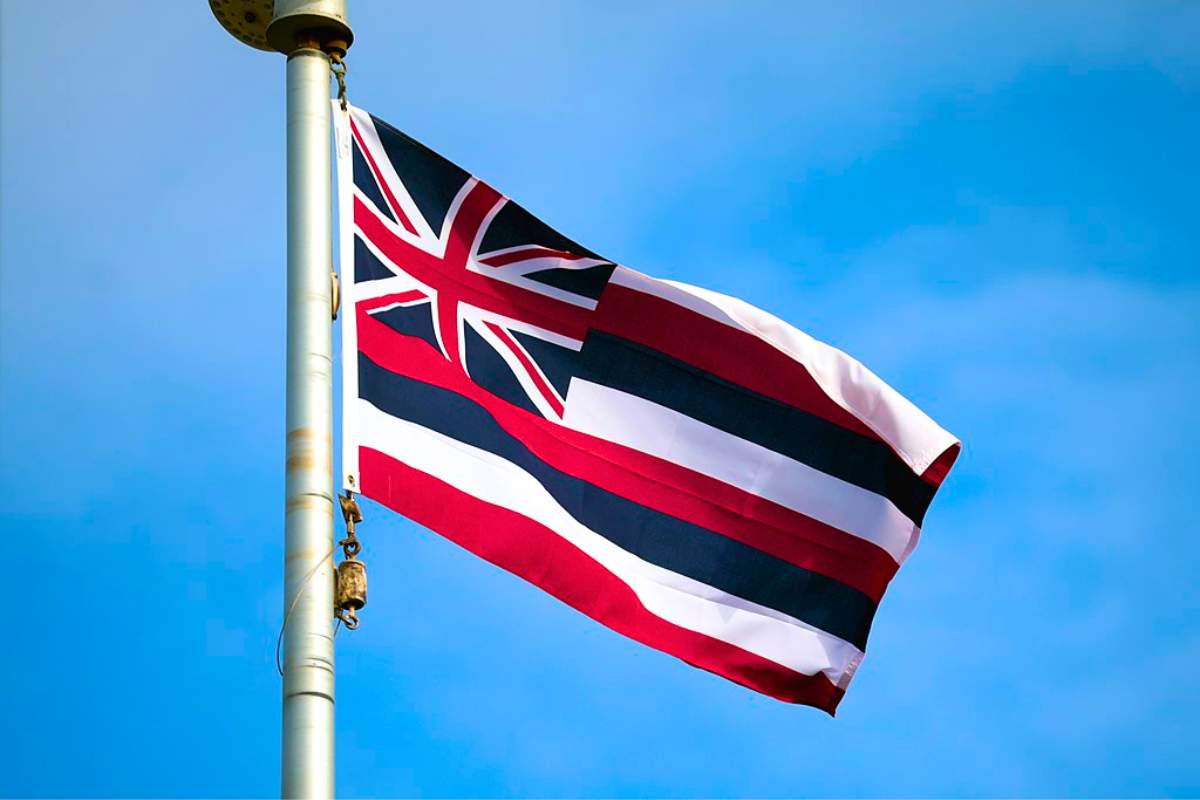Hawaii is known for its beautiful scenery, rich culture, and unique traditions. One aspect of the state’s identity that is often overlooked is its collection of state symbols. Hawaii has a variety of state symbols that represent its history, culture, and natural resources.
From the state bird to the state motto, each symbol has a story to tell. Some were chosen for their historical significance, while others were selected to represent Hawaii’s unique flora and fauna. Understanding the meaning and history behind each symbol can provide insight into the state’s identity and values.
Whether you’re a resident of Hawaii or a visitor, learning about the state symbols can deepen your appreciation for this beautiful place. In this article, we will provide a comprehensive list of Hawaii’s state symbols, along with their history and significance.
14 Hawaii State Symbols
1. State Flag
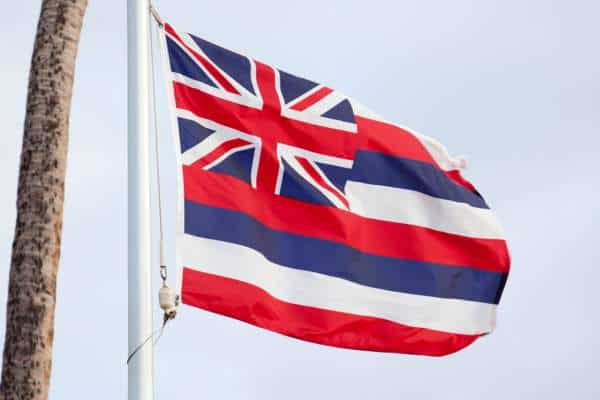
The Hawaiian flag includes eight stripes of white, red, and blue, symbolizing the eight main islands of Hawaii, and was designed by King Kamehameha I in 1816. It was officially adopted as the state flag on December 29, 1845.
Union Jack
The Union Jack in the top left corner represents Hawaii’s historical ties to Great Britain. King Kamehameha I, the ruler who united the Hawaiian Islands under a single kingdom, commissioned the flag in 1816 after establishing friendly relations with British explorer George Vancouver. The presence of the Union Jack symbolizes the mutual respect and alliance between Hawaii and Great Britain during the early 19th century.
Eight Stripes
The eight stripes of white, red, and blue symbolize the eight main islands of Hawaii: Hawai’i (the Big Island), Maui, O’ahu, Kaua’i, Moloka’i, Lana’i, Ni’ihau, and Kaho’olawe. These stripes also reflect the influence of the United States on the Hawaiian flag, as the color scheme is reminiscent of the American flag. It’s worth noting that the arrangement of the stripes is different from the U.S. flag, with alternating white, red, and blue horizontal stripes.
International recognition
King Kamehameha I initially adopted the flag to establish a unique symbol for the Kingdom of Hawaii, which would be recognized internationally. The flag continued to represent the kingdom throughout the 19th century. After the overthrow of the monarchy in 1893, the Republic of Hawaii was established, and the flag continued to be used.
When Hawaii was annexed by the United States in 1898 and became a U.S. territory in 1900, the flag was retained as the territorial flag. Finally, upon attaining statehood in 1959, the flag was officially adopted as the state flag of Hawaii on December 29, 1845, as specified in the Hawaiian Revised Statutes.
Today
The Hawaiian flag symbolizes the state’s unique cultural heritage and its historical connections to both Great Britain and the United States. The flag can be seen flying at government buildings, schools, and other public spaces throughout the Hawaiian Islands, serving as a constant reminder of the state’s rich and diverse history.
2. State Motto
The state motto of Hawaii is “Ua Mau ke Ea o ka ʻĀina i ka Pono,” which means “The life of the land is perpetuated in righteousness.” This motto was adopted in 1959, when Hawaii became a state.
3. State Seal
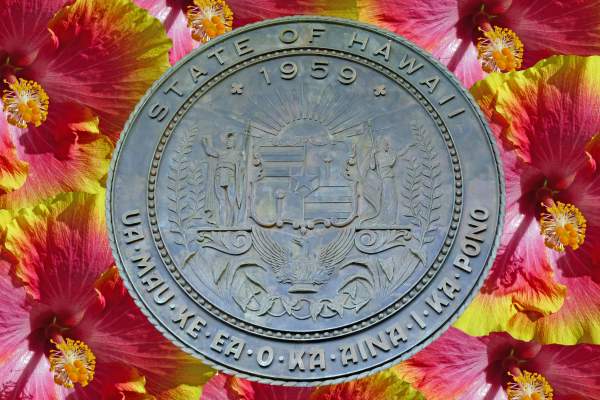
The state seal of Hawaii features the state motto, “Ua Mau ke Ea o ka ʻĀina i ka Pono,” which means “The life of the land is perpetuated in righteousness.” The seal also includes an image of a phoenix, symbolizing the rebirth of Hawaii after the overthrow of the monarchy. The seal was designed by Viggo Jacobsen in 1959 and officially adopted on June 8, 1959.
4. State Bird

The state bird of Hawaii is the Nēnē, also known as the Hawaiian goose. This bird is endemic to Hawaii and is considered a symbol of the state’s unique wildlife. The Nēnē was designated as the state bird in 1957.
5. State Flower
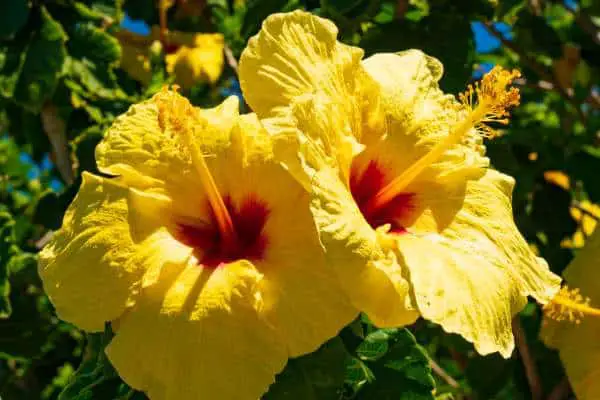
The state flower of Hawaii is the yellow hibiscus, also known as the Pua Aloalo. This flower is native to Hawaii and is commonly used in lei-making. The yellow hibiscus was designated as the state flower in 1988.
6. State Tree

The state tree of Hawaii is the Kukui, also known as the candlenut tree. This tree is native to Hawaii and is valued for its nuts, which were traditionally used as a source of light. The Kukui was designated as the state tree in 1959.
7. State Fish
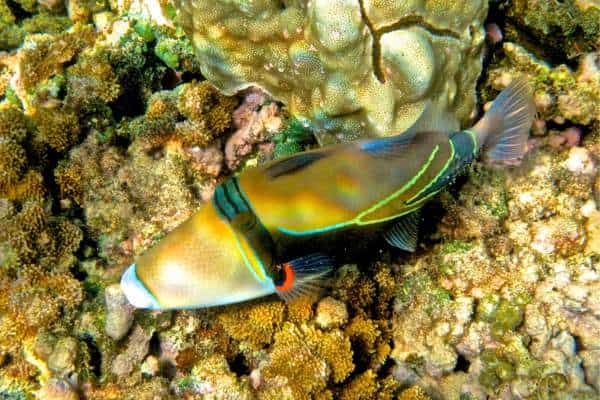
The state fish of Hawaii is the Humuhumunukunukuāpuaʻa, also known as the reef triggerfish. This fish is native to Hawaii and is known for its unique name and colorful markings. The Humuhumunukunukuāpuaʻa was designated as the state fish in 1985.
8. State Mammal
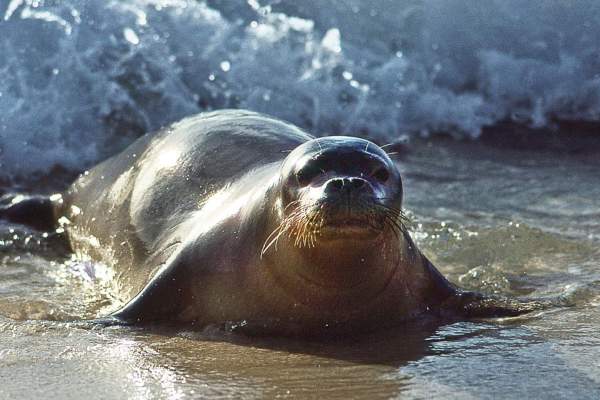
The Hawaiian Monk Seal (Neomonachus schauinslandi) is an endangered species endemic to the Hawaiian Islands. It was designated as the state mammal in 2008.
9. State Marine Mammal

Humpback Whale (Megaptera novaeangliae) was designated as the state marine mammal in 1979. These whales migrate to Hawaii’s warm waters during the winter months to breed and give birth.
10. State Insect

Pulelehua, or the Kamehameha Butterfly (Vanessa tameamea), was designated as the state insect in 2009. It is one of only two native butterfly species found in Hawaii.
11. State Sport

Outrigger Canoe Paddling was designated as the state sport in 1986, reflecting Hawaii’s rich Polynesian heritage and the significance of canoeing in Hawaiian culture.
12. State Song
The state song of Hawaii is “Hawaiʻi Ponoʻī.” The song was written by King David Kalākaua in 1874 and was adopted as the state song in 1967. The lyrics of the song celebrate the beauty and culture of Hawaii.
13. State Dance

Hula, a traditional Hawaiian dance form, was designated as the state dance in 1999. Hula is deeply ingrained in Hawaiian culture and is performed to tell stories, honor deities, and preserve history.
14. State Gem
Black Coral was designated as the state gem in 1987. Black coral is found in the deep-sea coral reefs surrounding the Hawaiian Islands and has been used to create jewelry and other decorative items.
Choosing a state symbol
The process of choosing official state symbols often involves proposals and recommendations from various individuals, organizations, and government entities.
In Hawaii, the adoption of state symbols typically requires the passage of legislation by the Hawaii State Legislature, which is composed of the Senate and the House of Representatives. The governor, as the head of the executive branch, then signs the legislation into law.
State symbols may be chosen based on their historical, cultural, or ecological significance to Hawaii. For instance, the Hawaiian state bird, the Nene (Branta sandvicensis), was designated as the state symbol in 1957 due to its uniqueness as an endemic species found only in Hawaii.
Similarly, the state flower, the Yellow Hibiscus (Hibiscus brackenridgei), was chosen for its beauty and representation of the rich flora of the islands.
In some cases, the selection of state symbols may be influenced by public input or through contests, as was the case for the Hawaii State Motto, “Ua Mau ke Ea o ka Aina i ka Pono” (“The life of the land is perpetuated in righteousness”), which was adopted when Hawaii became a U.S. territory in 1900.
This motto was selected from submissions to a contest held by the Hawaii Commission, which was responsible for designing the territorial seal and flag.
Overall, the process of selecting and adopting state symbols in Hawaii involves collaboration among elected officials, government entities, and, at times, the general public.
These symbols often reflect the unique history, culture, and natural environment of the islands, serving as enduring representations of Hawaii’s identity.
A Brief History of Hawaii
The modern history of Hawaii dates back to the late 18th century when British explorer Captain James Cook first arrived on the islands in 1778. Following a period of increasing contact with European and American traders, missionaries, and settlers, the Kingdom of Hawaii was established in 1810 under King Kamehameha the Great, who united the Hawaiian Islands under a single ruler.
Throughout the 19th century, the kingdom experienced significant social, political, and economic changes, including the development of a written constitution, the Great Mahele land redistribution, and the rise of the sugar industry.
In 1893, the Hawaiian monarchy was overthrown, and a provisional government led by American and European settlers was established. Hawaii was annexed by the United States in 1898, became a U.S. territory in 1900, and finally attained statehood in 1959 as the 50th state. So this is when a few of the current state symbols were put in place.
